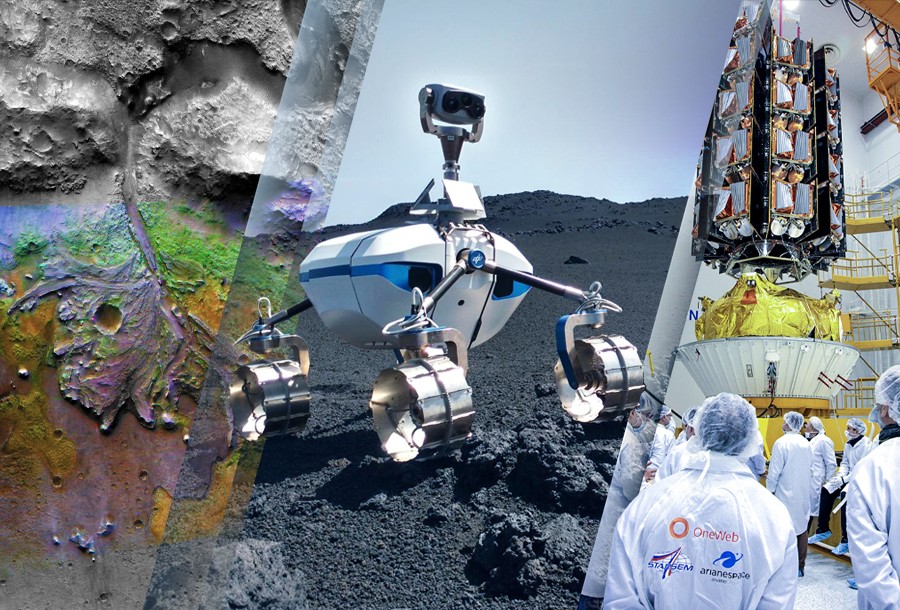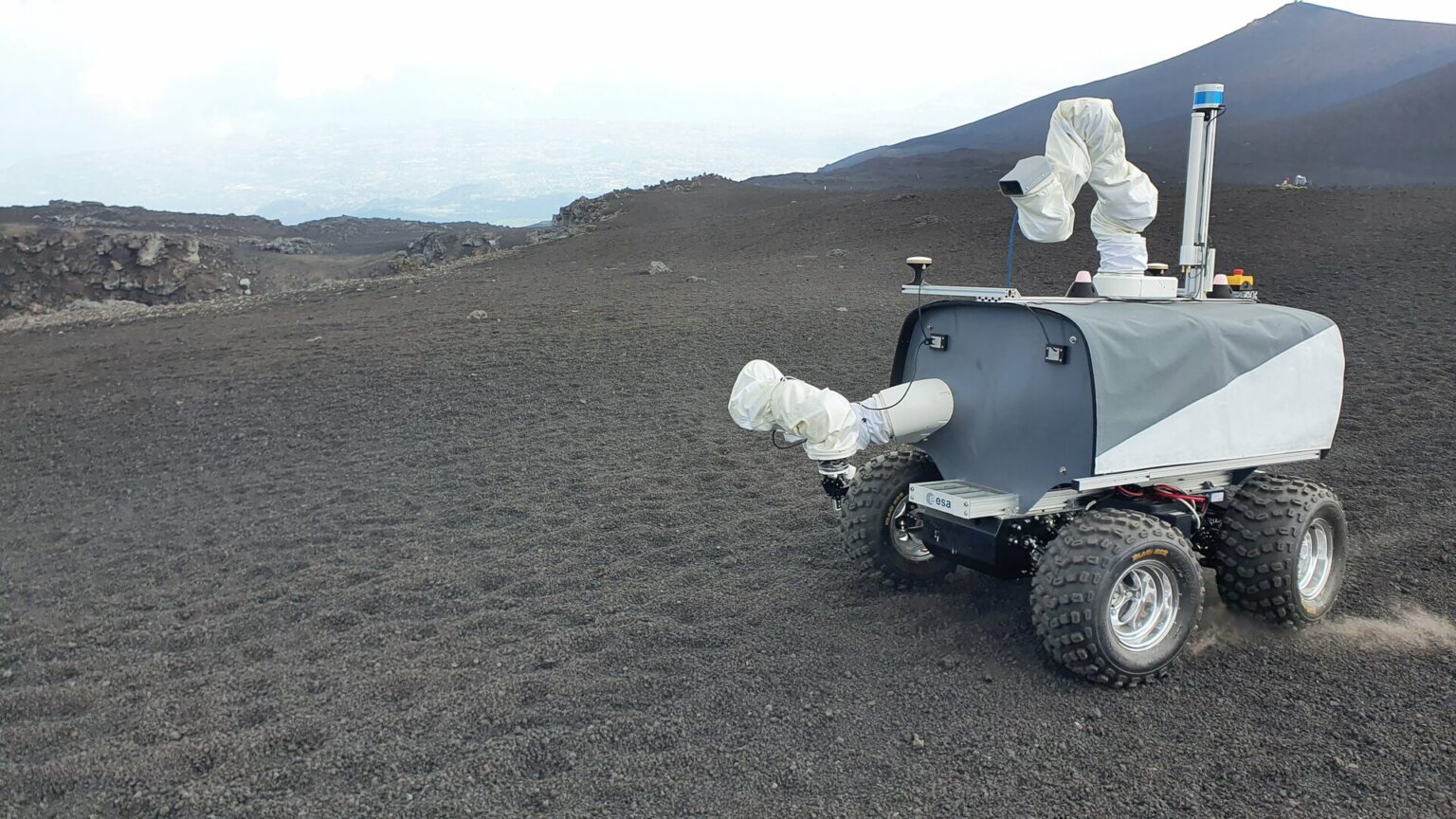Selection of the most interesting space news for breakfast: NASA wants to return the moon dust and cockroaches put up for auction. Mars Reconnaissance Orbiter releases a new color map of Mars, and we tell you about the most interesting facts about Pluto.

- NASA will not repeat the SLS Launch Rehearsal
- Mars Reconnaissance Orbiter releasing one of its last rainbow-colored maps
- Hughes and OneWeb supplied the military with satellite Internet
- OneWeb to resume launches in fourth quarter
- China looks set to build space solar power station
- SatixFy names CEO to lead its public company transformation
- Parallel Paths for Space Sustainability
- Lunar science stirring on Mount Etna
- NASA halts sale of cockroach-eaten Apollo 11 moon dust
- 12 interesting facts about Pluto (article)
NASA will not repeat the SLS Launch Rehearsal
NASA management has decided not to re-rehearse the launch of the SLS rocket. This means that after the inspection and elimination of technical malfunctions, engineers will begin to prepare the superheavy carrier for a flight to the moon. The fourth SLS launch dress rehearsal was held on June 20 (the three previous tests took place in April and were not completed due to various problems). This time, the engineers managed to fully refuel the rocket. Unfortunately, during the test, there was another fly in the ointment, in the form of a new hydrogen leak.
Mars Reconnaissance Orbiter releasing one of its last rainbow-colored maps
Scientists are about to get a new look at Mars, thanks to a multicolored 5.6-gigapixel map. Covering 86% of the Red Planet’s surface, the map reveals the distribution of dozens of key minerals. By looking at mineral distribution, scientists can better understand Mars’ watery past and can prioritize which regions need to be studied in more depth.
Market News

Hughes and OneWeb supplied the military with satellite Internet
Hughes and OneWeb have announced that they have successfully placed equipment to work with their satellite network based on Tula. Now the US military can use high-speed Internet even in the north of Greenland.
On June 22, Hughes Network Systems and OneWeb announced that they had successfully placed a prototype of satellite Internet access equipment at the US Air Force Base Tula. Now the US military will have access to the Internet fast enough to watch videos online or make video calls.
Thule Air Base is located in the north of Greenland, less than 1000 km from the North Pole. In the 1950s, it was built to warn of a missile attack from the Soviet Union. Now there are about 600 personnel at the base.
OneWeb to resume launches in fourth quarter
OneWeb, the broadband megaconstellation company whose launch plans were disrupted by Russia’s invasion of Ukraine, expects to resume launches late this year, an executive said June 23.
Speaking at the Fourth Summit for Space Sustainability by the Secure World Foundation and the U.K. Space Agency, Maurizio Vanotti, vice president of space infrastructure development and partnerships at OneWeb, said new launch agreements with SpaceX and NewSpace India Ltd. (NSIL) would allow the company to launch the remaining satellites of its first-generation system by the second quarter of 2023.
China looks set to build space solar power station
China has made a milestone advance in its effort to build a solar power station in space to convert the sunlight in outer space into an electrical supply to drive the satellites in orbits or transmit power back to the Earth.
A research team from Xidian University has wrapped up the world’s first full-chain, system-wide ground verification for space solar power station this month, displaying multiple key know-hows for the futuristic project known as Zhuri or chasing the sun.
SatixFy names CEO to lead its public company transformation
SatixFy named David Ripstein as CEO June 23 to lead the satcoms equipment maker’s planned transformation into a public company.
Ripstein is currently CEO of British automotive-focused telematics provider GreenRoad Technologies, specializing in the automotive industry, and will assume his new role at Israel-based SatixFy June 27.
He will take over responsibilities from SatixFy chair and chief financial officer Yoav Leibovitch, who held them on a temporary basis after co-founder and former CEO Yoel Gat died April 8 from cancer.
Parallel Paths for Space Sustainability
When U.S. Vice President Kamala Harris announced in an April 18 speech at Vandenberg Space Force Base that the United States would ban the testing of destructive, direct-ascent antisatellite (ASAT) weapons, it was not entirely surprising.
Like many other Western governments, the Biden administration was sharply critical of last November’s Russian ASAT test that destroyed the Cosmos 1408 satellite and created more than 1,500 pieces of debris large enough to be tracked, and likely many more smaller pieces. Kathleen Hicks, deputy secretary of defense, said at a meeting of the National Space Council just a couple weeks later that the Pentagon “would like to see all nations agree to refrain from antisatellite weapons testing that creates debris.”
Interesting

Lunar science stirring on Mount Etna
This image comes to you from Mount Etna, Sicily, where a lunar analog study focusing on robotic exploration is currently unfolding.
The project – named the ARCHES Space-Analog Demonstration – is a multi-agency, multi-robot event brought to life by the German Aerospace Center DLR, and featuring significant ESA participation. ESA will be joining the project to run the latest and final part of the Analog-1 campaign, the completion of which will mark the culmination of one of the agency’s long-term research endeavours, dating back to 2008.
NASA halts sale of cockroach-eaten Apollo 11 moon dust
As it turns out, attempting to sell moon dust that was extracted from the stomachs of cockroaches does indeed bug NASA. So much so, that the space agency requested RR Auction of New Hampshire halt its sale of the once-digested lunar sample. The lot in question, “Apollo 11 Lunar Soil Experiment (Cockroaches, Slides, and Post-Destructive Testing Specimen)” had been set to fall under the hammer on Thursday evening , as part of the live bidding segment of RR’s “Remarkable Rarities” auction.
12 interesting facts about Pluto (article)
For more than seventy years, Pluto was the ninth planet in the solar system, until in 2006 the International Astronomical Union (IAU) “reduced it to the rank” of a dwarf planet. But this does not make Pluto less in any way. We have collected twelve most interesting facts about this distant and unusual world.
Follow us on Twitter to get the most interesting space news in time
https://twitter.com/ust_magazine
